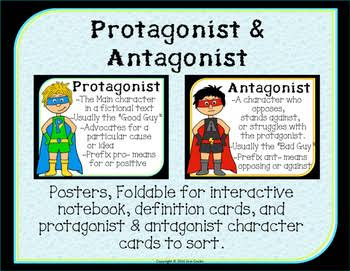PRINCIPLES AND ELEMENTS AND TECHNIQUES IN CREATIVE NONFICTION
3. Principles, Elements, Techniques and Devices in Creative Nonfiction.
DEFINITION:
PLOT
- Plot is known as the foundation of a novel or story, around which the characters and settings are built. It is meant to organize information and events in a logical manner. When writing the plot of a piece of literature, the author has to be careful that it does not dominate the other parts of the story.
Primary Elements of a Plot
- There are five main elements in a plot.
Exposition or Introduction
- This is the beginning of the story, where characters and setting are established. The conflict or main problem is introduced as well.
Rising Action
- Rising action which occurs when a series of events build up to the conflict. The main characters are established by the time the rising action of a plot occurs, and at the same time, events begin to get complicated. It is during this part of a story that excitement, tension, or crisis is encountered.
Climax
- In the climax, or the main point of the plot, there is a turning point of the story. This is meant to be the moment of highest interest and emotion, leaving the reader wondering what is going to happen next.
Falling Action
- Falling action, or the winding up of the story, occurs when events and complications begin to resolve. The result of the actions of the main characters are put forward. Resolution - Resolution, or the conclusion, is the end of a story, which may occur with either a happy or a tragic ending.
Resolution
- Resolution, or the conclusion, is the end of a story, which may occur with either a happy or a tragic ending.
Examples:
1: Harry Potter and the Sorcerer’s Stone (By J. K. Rowling)
- Among the examples of plot in modern literature, Harry Potter and the Sorcerer’s Stone is probably the most familiar to both readers and moviegoers. The plot of the story begins when Harry learns that Professor Snape is after the Sorcerer’s Stone. The Professor lets loose a troll, who nearly kills Harry and his friends. In addition, Harry finds out that Hagrid let out the secret of the giant dog to a stranger in return for a dragon, which means that Snape can now reach the Sorcerer’s Stone.
2: Pride and Prejudice (By Jane Austen)
- A very good plot example in romantic fiction appears in the book Pride and Prejudice by Jane Austen. The plot of the story begins when Lizzie’s sister, Jane, falls in love with Darcy’s friend named Mr. Bingley. Lizzie develops and interest in Mr. Wickham, who accuses Darcy of destroying him financially. When Lizzie goes to meet her friend, she runs into Mr. Darcy, who proposes, and Lizzie rejects. She then writes him a letter telling him why she dislikes him. He writes back, clearing up all misunderstandings and accusations. Jane runs away with Mr. Wickham, and Lizzie realizes that Mr. Darcy is not as bad a man as she had thought him to be.
Definition
Characters
- A character is a person, animal, being, creature, or thing in a story. Writers use characters to perform the actions and speak dialogue, moving the story along a plot line. A story can have only one character (protagonist) and still be a complete story. This character’s conflict may be an inner one (within him/herself), or a conflict with something natural, such as climbing a mountain. Most stories have multiple characters interacting, with one of them as the antagonist, causing a conflict for the protagonist.
I. Major characters
Protagonist
– This is the main character, around which the whole story revolves. The decisions made by this character will be affected by a conflict from within, or externally through another character, nature, technology, society, or the fates/God.
Antagonist
– This character, or group of characters, causes the conflict for the protagonist. However, the antagonist could be the protagonist, who is torn by a problem within. Most times, something external is causing the problem. A group of people causing the conflict would be considered society, perhaps the members of a team, community, or institution. Additionally, the antagonist could be a part of nature, such as an animal, the weather, a mountain or lake.
II. Minor characters
- These are the other characters in a story. They are not as important as the major characters, but still play a large part in the story. Their actions help drive the story forward. They may impact the decisions the protagonist or antagonist make, either helping or interfering with the conflict. Characters can have different traits. Major characters will usually be more dynamic, changing and growing through the story while minor characters may be more static.
Foil - A foil is a character that has opposite character traits from another, meant to help highlight or bring out another’s positive or negative side. Many times, the antagonist is the foil for the protagonist.
Static – Characters who are static do not change throughout the story. Their use may simply be to create or relieve tension, or they were not meant to change. A major character can remain static through the whole story.
Dynamic – Dynamic characters change throughout the story. They may learn a lesson, become bad, or change in complex ways.
Flat – A flat character has one or two main traits, usually only all positive or negative. They are the opposite of a round character. The flaw or strength has its use in the story. Round – These are the opposite of the flat character. These characters have many different traits, good and bad, making them more interesting. Stock – These are the stereotypical characters, such as the boy genius, ambitious career person, faithful sidekick, mad scientist, etc.






No comments:
Post a Comment